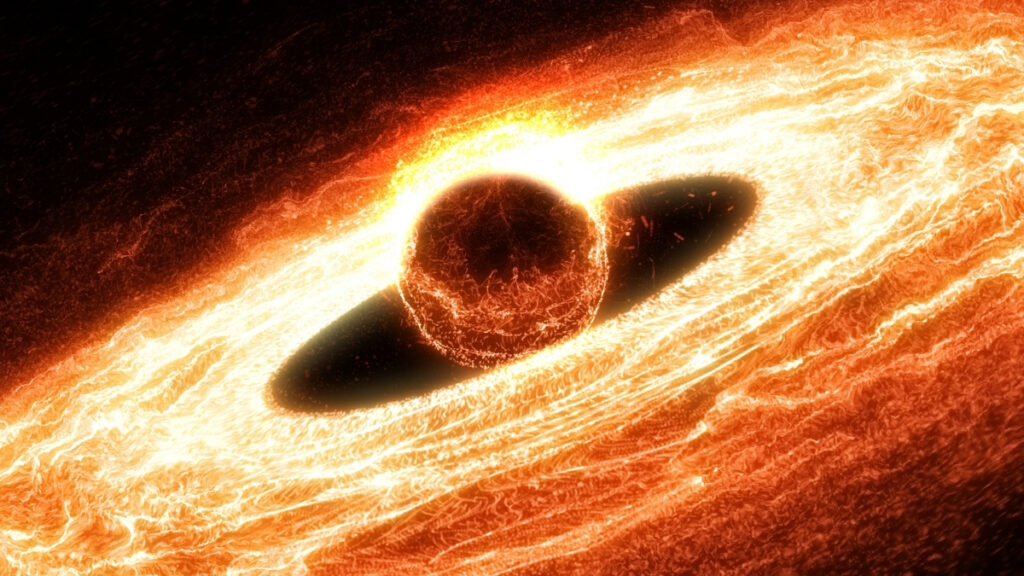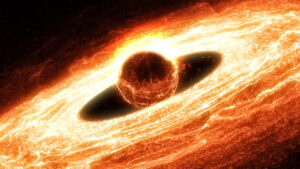
The James Webb Space Telescope (JWST) may have uncovered the most compelling evidence yet for the existence of a theoretical astronomical object known as a dark star. If verified, this discovery could significantly advance our understanding of several unresolved questions in physics and cosmology. Unlike conventional stars that derive their energy from nuclear fusion, dark stars would be powered by a core of interacting dark matter particles.
Cosmin Ilie, an astrophysicist from Colgate University, explains that “supermassive dark stars are extremely bright, giant, yet puffy clouds made primarily out of hydrogen and helium, which are supported against gravitational collapse by the minute amounts of self-annihilating dark matter inside them.”
The research team assessed four of the most distant objects ever observed and found that all could potentially align with the dark star theory. Notably, one object exhibited a distinct light absorption feature at a wavelength of 1,640 Angstroms, a hallmark indicative of dark stars. This feature arises from singly ionized helium present in their atmospheres. Ilie remarked, “While the signal-to-noise ratio of this feature is relatively low, it is the first time we found a potential smoking gun signature of a dark star, which, in itself, is remarkable.”
Uncovering the Secrets of the Early Universe
Since its launch in 2021, JWST has provided unprecedented views of space, revealing large galaxies from an era where their existence seemed implausible. Astrophysicists have proposed that dark stars, with a mass potentially equivalent to a million Suns, could mimic the appearance of galaxies from such great distances.
The recent study delves into the spectra and morphology of the four distant objects. Among them, one appears consistent with a point source, while the other three are more diffuse, suggesting they could be dark stars enveloped in nebulae composed of ionized hydrogen and helium. Nevertheless, the researchers acknowledge that these four objects might still be interpreted as galaxies, which introduces further questions about their true nature.
Dark stars remain a theoretical concept, yet their potential existence could illuminate key aspects of dark matter. Their collapse could lead to the formation of black holes with significant mass, offering a possible explanation for the early emergence of supermassive black holes that have been detected in the Universe’s history. These black holes’ masses are often deemed impossible according to current growth theories, making dark stars a potential shortcut in understanding their formation.
As the research progresses, additional observations will be necessary to confirm the identities of these enigmatic distant entities. Regardless of their classification, they hold the potential to reshape our understanding of the cosmos and the fundamental laws of physics. The findings were published in the journal PNAS, marking a significant milestone in the ongoing exploration of our Universe’s mysteries.






